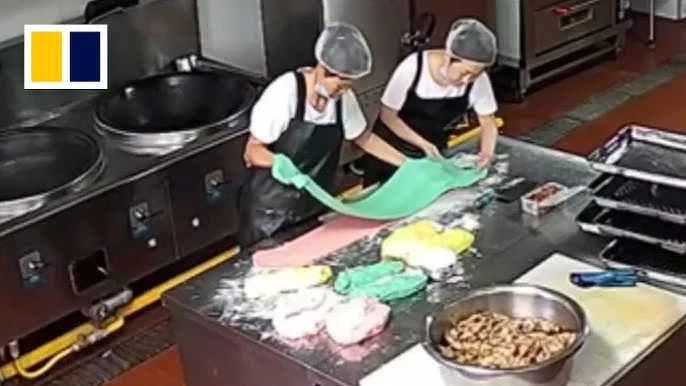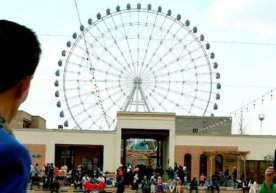
. In Tianshui city, Gansu province, China, more than 230 children at the Brownstone Peixin kindergarten suffered poisoning after eating meals colored with industrial-grade paint. The incident, which happened earlier this month, has become one of the most significant exposures of food safety failures in Chinese schools and kindergartens.
. According to the latest investigative report released by the provincial party committee, there were major safety and oversight lapses at the school and kindergarten, along with attempts to cover up the incident, bribe responsible officials, and manipulate test results.
. The report revealed that the kindergarten principal had instructed staff to make the food look more appealing to attract more students, using industrial pigment. The cook bought the industrial-grade coloring online and added it to dishes, despite clear warnings that it was “not for consumption.” One pigment was found to have a lead concentration 400,000 times the legal limit. Previously, the kindergarten had used food-safe colorings that cost less, but this time, brighter industrial dyes were chosen.
. Initially, 235 children were hospitalized. Some experienced stomach pain, nausea, and even blackened teeth. Final medical tests showed that 247 students and some staff, including the principal, had blood lead levels above the safe limit.
. Six kindergarten staff members, including the principal, were arrested for knowingly using toxic substances in the food. Disciplinary investigations have been launched against 27 more people working for the school, hospital, and local authorities.
. The report highlighted failures and mistakes at every stage of the investigation. The Gansu provincial center for disease control did not investigate thoroughly after taking the case, and sample collection violated health regulations, causing a “huge difference” between actual and reported results.. The report revealed that the kindergarten principal had instructed staff to make the food look more appealing to attract more students, using industrial pigment. The cook bought the industrial-grade coloring online and added it to dishes, despite clear warnings that it was “not for consumption.” One pigment was found to have a lead concentration 400,000 times the legal limit. Previously, the kindergarten had used food-safe colorings that cost less, but this time, brighter industrial dyes were chosen.
. Initially, 235 children were hospitalized. Some experienced stomach pain, nausea, and even blackened teeth. Final medical tests showed that 247 students and some staff, including the principal, had blood lead levels above the safe limit.
. Six kindergarten staff members, including the principal, were arrested for knowingly using toxic substances in the food. Disciplinary investigations have been launched against 27 more people working for the school, hospital, and local authorities.
. The report highlighted failures and mistakes at every stage of the investigation. The Gansu provincial center for disease control did not investigate thoroughly after taking the case, and sample collection violated health regulations, causing a “huge difference” between actual and reported results.
. At the Tianshui Second People’s Hospital, at least two children’s test results were illegally altered to show much lower lead levels. The report said the hospital’s laboratory management was disorganized, with unclear responsibilities and poorly trained staff.
. The local education bureau was also accused of failing to inspect any private kindergartens for two years, and allowing the kindergarten to operate without a license, despite charging high fees. Some officials are suspected of accepting bribes and favors from the kindergarten’s major investor. China’s top anti-corruption agency has launched a review and investigation into multiple officials and senior hospital managers.
. All children have received treatment, with only one still under medical care. After the first round of treatment, blood lead levels dropped by an average of 40%.
. The provincial government and party committee expressed deep regret and offered apologies to the children and their parents.
. After the report was published, large protests broke out in front of the kindergarten. There were confrontations between parents and police, with video footage showing use of force and parents blocking the road, demanding: “Hand over those who beat people up.” Read “Zamin” on Telegram!
Ctrl
Enter
Found a mistake?
Select the phrase and press Ctrl+Enter Related news
Information
Users of Меҳмон are not allowed to comment this publication.
Users of Меҳмон are not allowed to comment this publication.














